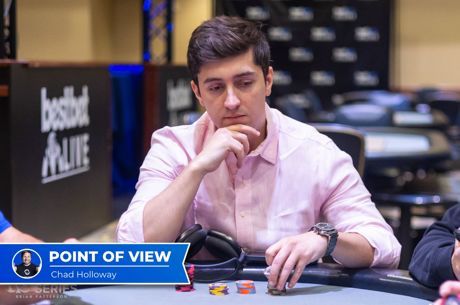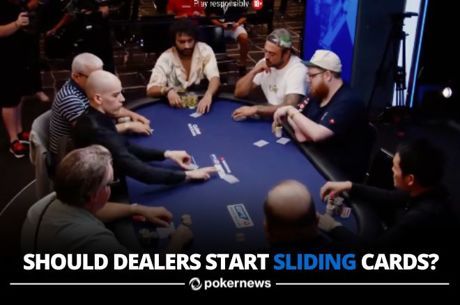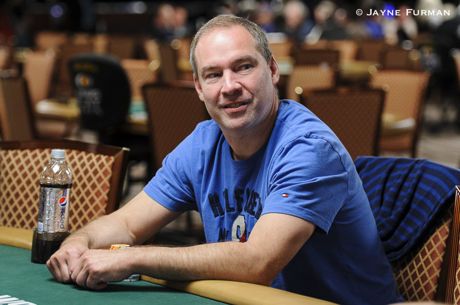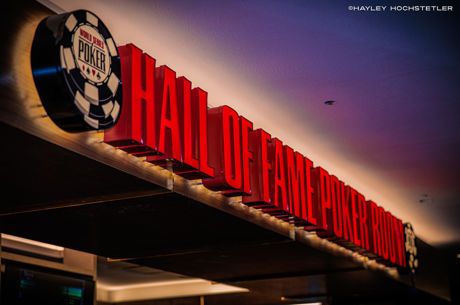2011 World Series of Poker Main Event: Lights, Camera, Action

In 2003, when Chris Moneymaker won the World Series of Poker Main Event, the poker industry exploded. People were transfixed on the idea that an unknown accountant from Texas could win poker’s biggest prize. Moneymaker may not be the sole reason we are here today, but his win acted as the straw that broke the camel’s back, igniting the poker boom.
Moneymaker’s tale would’ve never reached millions of households if ESPN hadn’t documented it. Without the cameras, it is hard to believe that poker could have evolved into what it is today. Thankfully, the cameras were capturing the action, the boom microphones were fielding the various sounds from the floor, Lon McEachern and Norman Chad shed light on some of the nuances of the game, and poker transformed from a game of cards into a spectator sport.
Television coverage has changed over the years. At poker’s peak, final tables from the WSOP-C and preliminary events at the Series were aired. Now, only the $25,000 Heads-Up Championship, the $50,000 Poker Player’s Championship, the Main Event, and either the Tournament of Champions or some special event such as this year’s Grudge Matches are produced for television – everything else is simply live-streamed online. Also, for years 411 Productions served as the production team for the WSOP, but starting this year Mori Eskandani’s POKER PROductions took over, looking to give the coverage a fresh, new look.
Some of Eskandani’s changes have been fantastic while others have slowed the game tremendously. On a positive note, there are production people everywhere. Whether they are assistants, cameramen, sound operators, grips or gaffers, they are readily available and – when present – always capture what they need. Likewise, the secondary feature table has full coverage for the first time. In the past, the secondary table relied on two hand-held cameras and nine lipstick cameras, even as the field dwindled to 27 and 18 players. Now, POKER PROductions boasts a six- or seven-camera setup just for the secondary feature table, featuring its own jib-camera for flies, pans, tilts, and establishing and de-establishing shots. This means more coverage, more interesting shots, and a much better overall production.
While the coverage looks great and Eskandani’s team is learning on the fly, there are still major problems with game flow – especially on the outer tables. When hands are filmed on non-feature tables, the camera crew has to pause the action on every street, and then use a small, hand-held camera at the completion of the hand to record the hole cards. This slows the game down mightily, which has angered some players. Steve Brecher, who finished 31st for $242,636 in the Main Event, was constantly complaining to the production crew because he believed there was no incentive to being on television. Guillaume Darcourt went as far as hiding his hole cards in protest – an act that got him penalized for a few hands. Brecher makes a great point – without sponsorship money, there is a lot less incentive to make a televised table. In the past, players would received lump sums of money just to wear a patch, but now, in the post-Black Friday poker world, ESPN has no interest in advertising for banned poker sites.
Most importantly, if the players have invested $10,000 and are playing for nearly $9 million, they should have precedent at the table. Documenting the action is paramount, and the production crew should have full access, but at the same time they have to focus on being efficient and allowing the game to flow as naturally as possible. To solve this problem, perhaps the crew could use three cameras on the outer tables rather than two. That way they could always have one on the board while cross-shooting the players involved in the hand with the other two. This would limit the number of camera teams, but it would make filming hands much more efficient.
That being said, I am still very excited to see the final, fully edited episodes. The live broadcasts have been fantastic. Televised poker has come a long way, and Eskandani’s team continues to raise the bar every year. Hopefully, they will continue to better their coverage here at the WSOP in the coming years, and continue to propel our game forward in the future.
This is the best time of the year to be a fan of PokerNews. Follow us on Facebook and Twitter.









